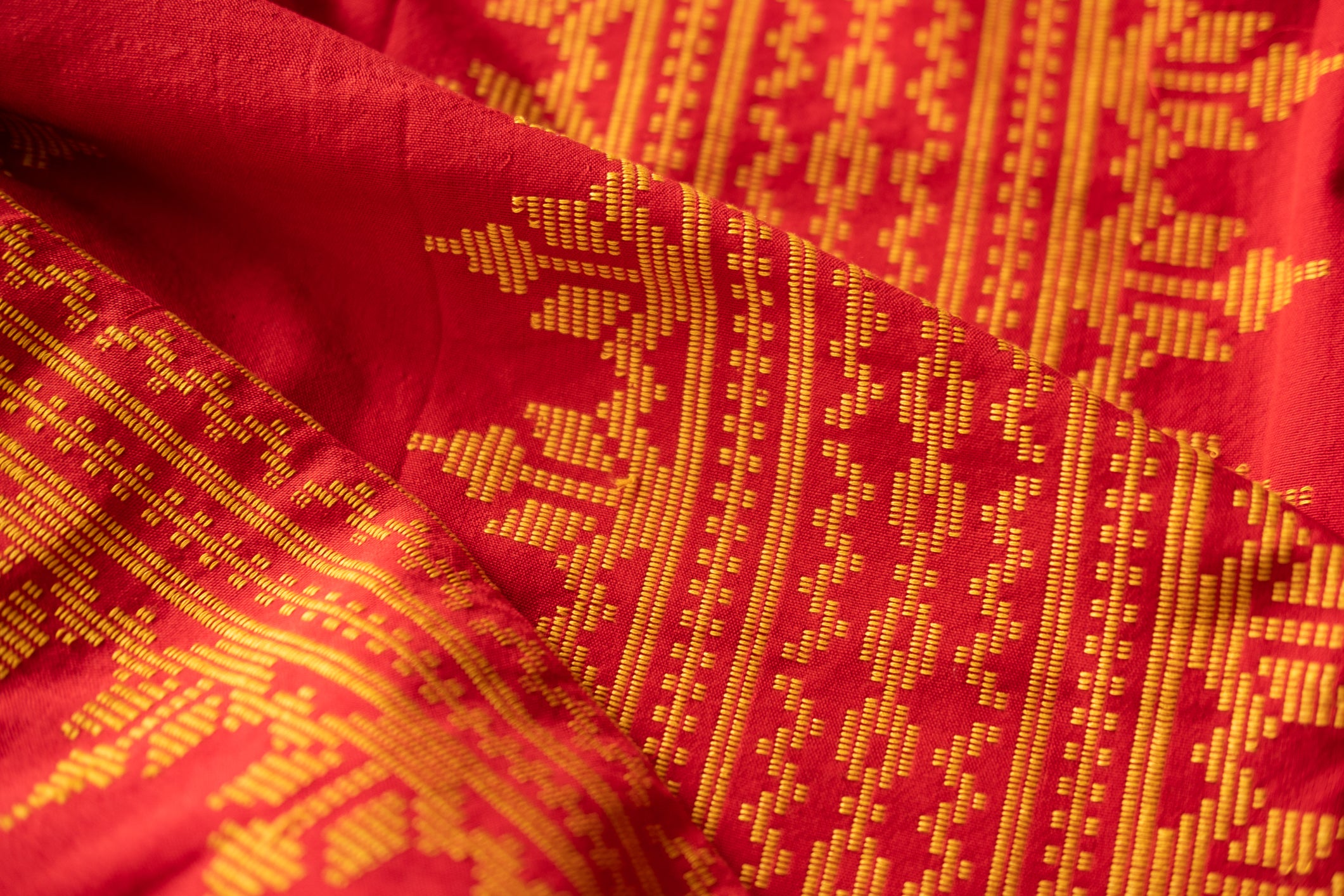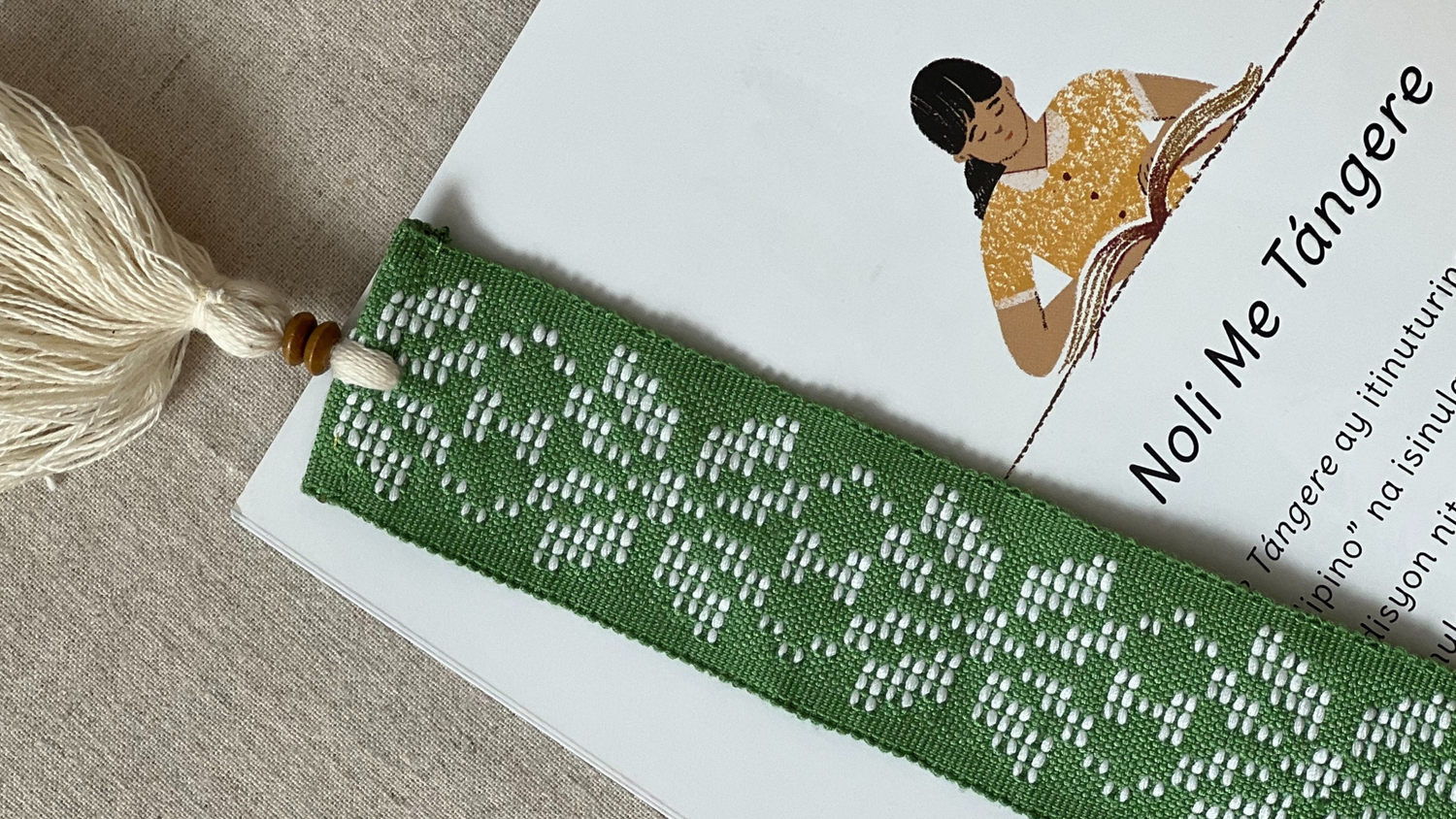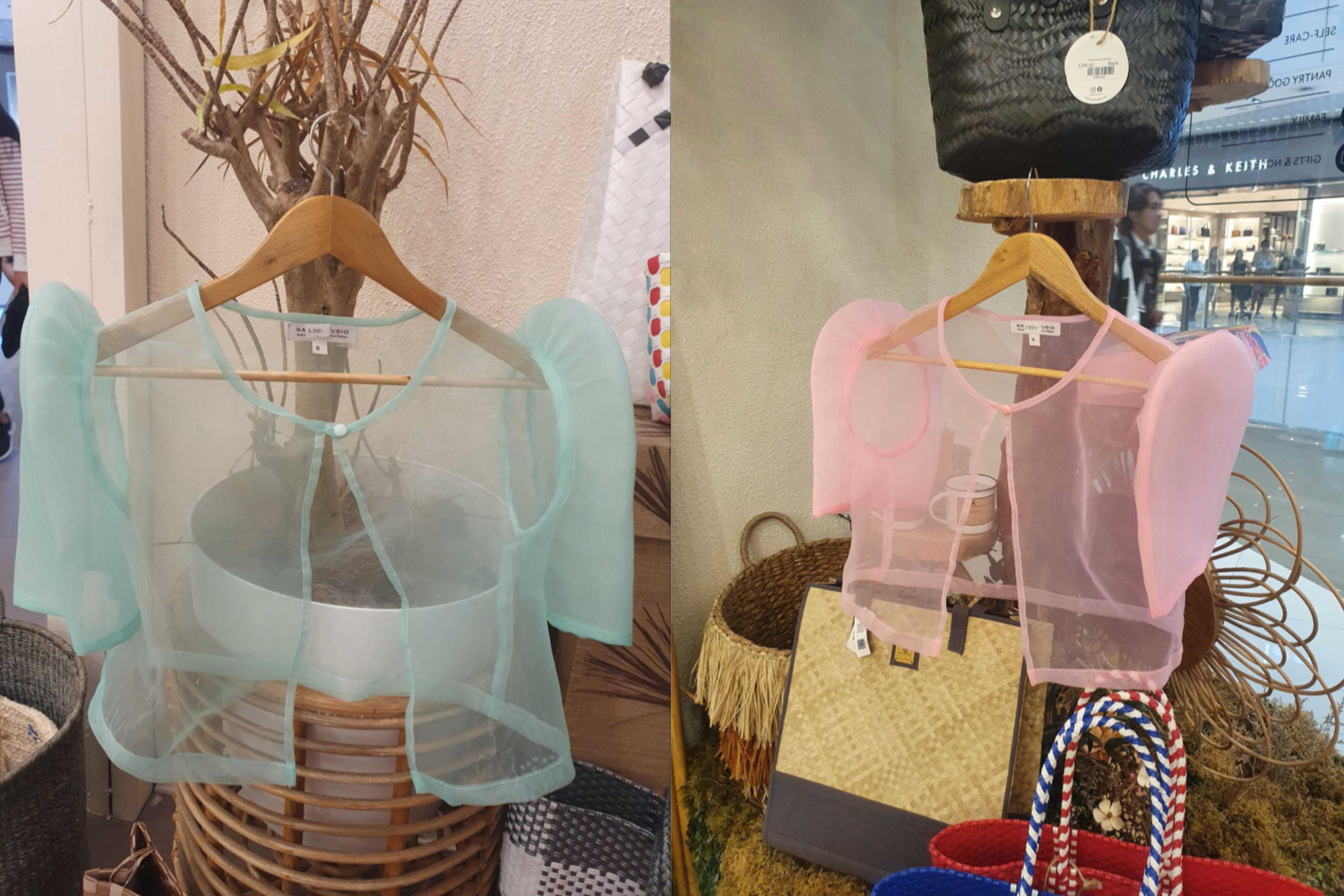The malong is one of the most well-known and widely-used textiles produced by the weavers of Mindanao. This multi-functional tubular garment from Maguindanao and Maranao has been a staple of Philippine traditional clothing; malong can be worn as dresses, skirts, trousers, capes, and more. Other weaving communities in the Philippines also create their own versions of the malong with differing names.
 Handwoven malongs from Maguindanao
Handwoven malongs from Maguindanao
The malong measures approximately 4 yards long and 50" high. It is typically worn draped over the entire body and donned by both men and women alike. One of the most common ways to wear the malong is as a wraparound skirt from high up on the waist all the way down to the wearer’s feet. This way of wearing the malong is referred to as katinambed for women and katampi for men. Women also typically wear the malong around their chest and sling one of its ends over their shoulder. This style is called kasinambir.

Maranao dancers and musicians wearing traditional garments
The malong is also known for its versatility. Both its shape and many different forms make the textile ideal for a variety of uses. Simpler malong are typically utilized as coverings, such as blankets, mosquito nets, raincoats, and head gear for protection against heat. The plainest malong are used as fishnets and basic sails for a boat, or a bangka. When inserted on each end with two sturdy poles, the malong can be made into a stretcher, called a dalagan. Young men would even bunch up their malong into makeshift gloves so they could practice boxing. The fancier and more ornate malong are reserved for special occasions.
Knowledge of how to weave the malong is seen as sacred amongst the Maranao and has been preserved across generations. In many weaving traditions, the responsibility falls to women to carry on this tradition, and thus their weaving education begins as early as childhood. Their skills are honed until they become expert weavers as adults. Malong weavers such as our partner artisans in Maguindanao are especially admired as some of the most skilled artisans.
 Malong featuring handwoven binaladuan patterns
Malong featuring handwoven binaladuan patterns
Other communities like the Yakan and Samal also weave the garment but call it by different names. The Tausug, for example, call their tubular garments tadjung. The northern regions in Visayas and Luzon call their wraparound skirts patadyong, which are mostly worn by women. The malong is also believed to be connected to the Indonesian sarong and Burmese loungi, both unisex barrel dresses.
There are over 100 different kinds of malongs. The two most prominent kinds of traditional malong are the malong landap and the malong andon. The malong landap is mostly plain except for its main feature: embroidered tapestry bands that run across the length and width of the fabric. These are called langkit. The langkit feature curvilinear okir motifs and thus must be woven separately before being attached to the main fabric of the malong. Traditionally, the malong landap comes in yellow with maroon langkit, but other variations also feature shades of violet.
The malong andon features two main motifs that occupy two halves of the fabric: the pako rabong and the patola. The pako rabong, or fern motif, refers to the spiraling curvilinear patterns that are woven using a supplementary weaving technique. The patola, or eight-pointed star, is rendered on the fabric using the ikat dyeing method, and features symmetrical curving and diagonal forms enclosed in a larger circle.

Detail of plaid handwoven malong
Some of the other kinds of malong include the malong ampik features checkered patterns akin to a Scottish kilt, while the malong bagadat has simple stripes and is usually worn by elders. Plaid designs are also commonly used by the Maguindanao. Their malong inaul are handwoven silk malongs that have plaid patterns that exhibit bright color contrasts.
View Narra Studio Malongs
As both weavers and enthusiasts alike continue to carry on the rich legacy of one of the Philippines’ most illustrious garments, the malong endures versatile and beautiful example of Philippine tradition and artistry.
Additional Reading:
https://artsandculture.google.com/exhibit/the-art-of-the-malong-ayala-museum/owKCDBBzFibtIg?hl=en
https://www.philstar.com/the-freeman/cebu-lifestyle/2018/12/04/1874111/malong-exquisitely-versatile
Featured on Festival Pagdiriwang.



 Handwoven
Handwoven 
 Malong featuring handwoven binaladuan patterns
Malong featuring handwoven binaladuan patterns


